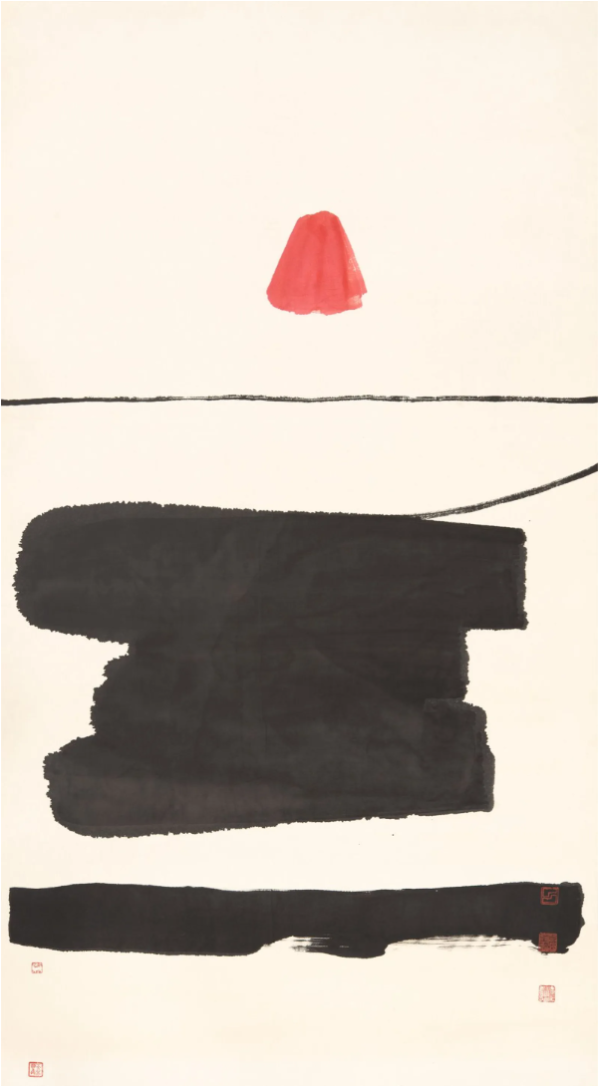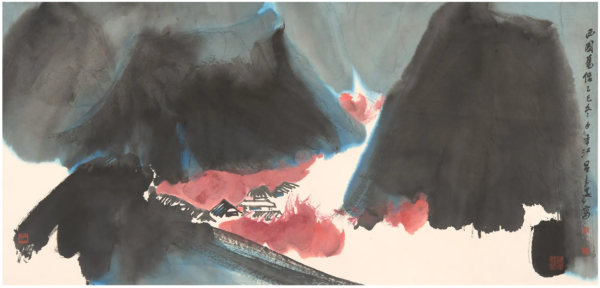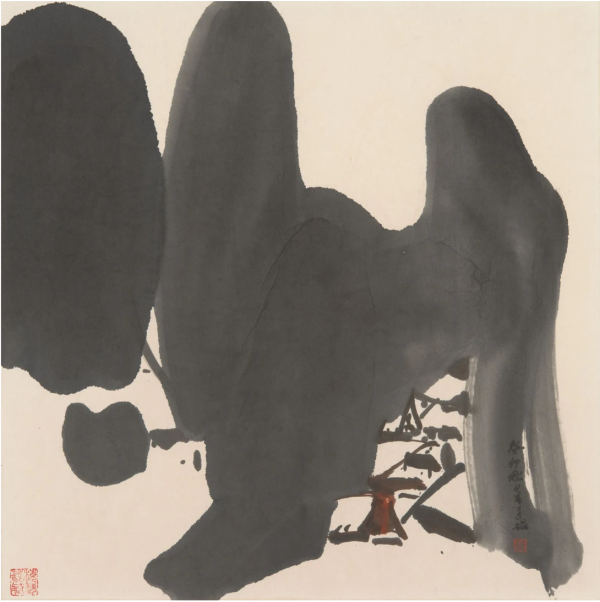
Lui Shou-KwanZen Painting 1970, 1970Chinese ink & colour on paper
151 x 83 cm
59 1/2 x 32 3/4 inches
Alisan Fine Arts
Lui Shou-kwan: Artist, Teacher, Scholar — Reframing a Legacy Fifty Years On Alisan Fine Arts proudly presents Lui Shou-kwan: Artist Teacher Scholar, an exhibition commemorating the 50th anniversary of the artist’s passing.
Bringing together roughly two dozen exemplary works spanning the decisive decades of his career from 1951 to 1972, the exhibition offers a rare opportunity to engage deeply with Lui’s artistic evolution.
Archival materials—ranging from pedagogical writings to teaching documents—accompany the artworks, illuminating the breadth of his intellectual and artistic contributions.
Together with a new publication of the same title, this landmark project reconsiders Lui’s multifaceted impact through his three intertwined identities: fearless innovator, devoted educator, and rigorous scholar. Five decades after his death, Lui remains a defining figure in Hong Kong art history, whose revolutionary vision continues to shape the development of contemporary ink painting across generations.
Born in Guangzhou in 1919 to a scholarly family, Lui grew up surrounded by classical Chinese art, nurtured by the erudition of his father, the scholar-painter and antiques dealer Lui Canming. His move to Hong Kong at age 28 marked a turning point, expanding his exposure to Western artistic thought and enabling a dynamic fusion of traditions.
This cross-cultural synthesis ultimately positioned him as a founding force of the New Ink Movement. Featuring rarely exhibited works from the Lui family’s private collection, the exhibition traces the arc of his artistic pursuits—from plein-air sketches of Hong Kong’s landscapes to semi-abstract interpretations and his iconic abstract Zen paintings.
The Artist Lui’s passionate insistence on individual artistic voice propelled his ceaseless experimentation.
While working as an inspector at the Hong Kong and Yaumatei Ferry Company and teaching art during off-hours, he painted the surrounding mountains and harbours directly from life, developing a visual vocabulary that oscillated between figuration and abstraction.
His early work Abstract—Xinmao Spring (1951) illustrates one of his initial forays into abstraction and signals the beginnings of his bold stylistic departure from traditional ink conventions.
The Teacher By the late 1950s, as Lui rose to prominence in Hong Kong’s burgeoning art scene, he became increasingly active in local and international art circles. Simultaneously, he began articulating his pedagogical philosophy through newspaper essays and formal teaching roles.

Lui Shou-KwanOld Pal's West Garden, 1965Chinese ink & colour on rice paper
45 x 94.5 cm
17 3/4 x 37 1/4 inches
Alisan Fine Arts
Central to his approach was the study of classical Chinese masterpieces—an essential practice he considered the foundation of artistic growth.
His “study paintings,” such as After Ren Bonian (1964) and After Shitao: Pines in Light Rain (1968), reveal both his reverence for and critical engagement with the past.
Lui himself continued copying ancient works throughout his life, viewing the practice as integral to his personal development, teaching methodology, and pursuit of self-cultivation.
The Scholar Lui’s intellectual contributions are preserved in numerous published texts, manuscripts, and extensive handwritten notes—several of which appear in this exhibition.
Works like Landscape (1972), accompanied by his own inscription on the principles of Chinese painting, encapsulate his scholarly depth. In these writings, he emphasises the conceptual significance of the dot and line, advocating for creative individuality while remaining grounded in the discipline of traditional ink techniques.
Since his unexpected passing in 1975, Lui’s influence has only grown. His commitment to personal expression, relentless inquiry, and the revitalisation of Chinese ink painting has left an indelible imprint on the trajectory of modern and contemporary Asian art.
This exhibition stands as a testament to his enduring legacy. Biographical Summary Lui Shou-kwan (1919–1975), widely regarded as Hong Kong’s pioneering figure of the New Ink Movement, has had profound and lasting influence on contemporary Chinese art.

Lui Shou-KwanDwelling, 1963Chinese ink & colour on rice paper
46 x 46.5 cm
18 1/8 x 18 3/8 inches
Alisan Fine Arts
Introduced to painting through his father, he trained by copying classical masters such as Bada Shanren, Shitao, and Huang Binhong—whom he briefly studied under.
After earning a degree in Economics from the University of Guangzhou in 1946, he relocated to Hong Kong in 1948 and began working at the Hong Kong and Yaumatei Ferry Company the following year.
Daily exposure to the city’s natural scenery informed his semi-abstract landscape works.
Over time, his experiments with abstraction and symbolism culminated in the creation of his singular Zen Painting series, a cornerstone of his artistic legacy.

Lui Shou-KwanMooring, 1962Chinese ink & colour on paper
93.5 x 46.5 cm
36 7/8 x 18 3/8 inches
Alisan Fine Arts